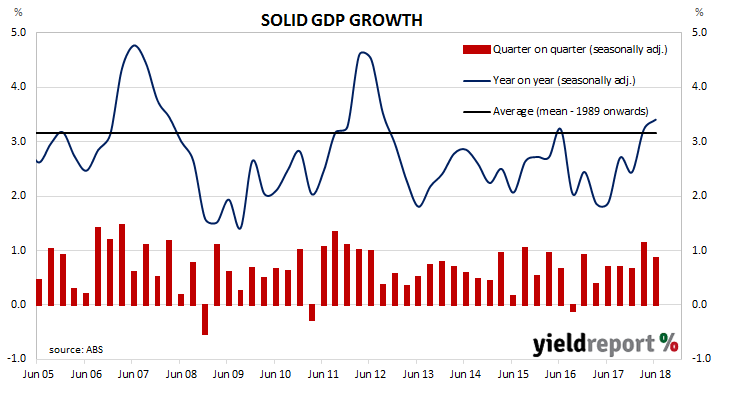A recession is generally defined by economists as two consecutive quarters of negative GDP, an event which last occurred in Australia in 1991. That recession became known as “the recession we had to have” after the then-Treasurer Paul Keating described it in that way. Since that time, Australia has had the odd negative quarter, such as in the September quarter of 2016 and the March quarter of 2011, but not two in a row. By and large, the last quarter of a century has been a period of steady and almost uninterrupted growth for Australia.
The latest figures released by the ABS indicate June quarter GDP grew by 0.9%, comfortably above the 0.7% expected by economists. Growth in the June quarter was less than that of March’s revised figure of 1.1% but the year-on-year growth figure increased from March’s revised figure of 3.2% to 3.4%. Growth rates in previous quarters were also revised higher.
Westpac chief economist Bill Evans said, “The report signals that growth in the economy over the past year has been significantly stronger than we had been led to believe and, indeed, comfortably above the generally accepted measure of potential growth of 2.75%.”

However, ANZ senior economist Felicity Emmett said some slowing was to be expected in coming quarters. “While the report highlights the current strength in the economy, momentum is likely to slow a little from here on, with for instance housing construction unlikely to add to growth in H2 [second half of 2018], and subtract through 2019. The drop in the household saving rate to just 1% also raises a question over the sustainability of consumer spending.”

